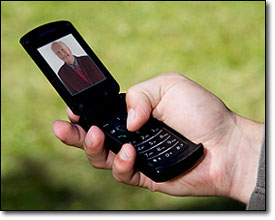
The research is in, and we know that the benefits are great for working with clients online with video, asynchronously through text, using apps, and many other technologies that creative clinicians and techies continue to think up. The American Telemedicine Association reports in their guidelines that there is no specific contraindication to TeleMental health work, and the body of research shows that therapeutic effectives and therapeutic connection are just as effective online as in-person.
Not only can TeleMental health bring great benefit to clients, but also it bring up new paths for clinicians’ creativity and facilitates new ways to find and serve clients without costing an arm and a leg. It is clear at this point that online and/or computer-mediated practice is definitely a part of every mental health professional’s future.
Our exciting 12 CE credit online course
TeleMental Health: The New Standard – Ethical, Legal, Clinical, Technological and Practice Considerations
is now available.
Along with this explosion in opportunity, we also see a solidification of professional standards. Almost every major professional association now has standards regarding online practice either as part of ethics codes or in separate professional guidelines. Nearly every state has laws that govern telehealth, as well. Never before have the standards for practice been as clear as they are right now.
Here are some useful facts around TeleMental health practice:
- Working across state lines continues to be fraught with difficulty, as every state has their own rules and the licensing boards struggle to balance the risks and benefits to their consumers.
- When working over video, it’s best to position the camera on top of your monitor, right above the client’s face (as best you can), and to keep the camera lens at your eye level. This is an essential piece of the puzzle of maintaining a sense that you are making eye contact with the client.
- Not only is Skype not a viable option for your HIPAA compliance, but a huge array of high quality, low cost (or free!), and HIPAA-secure options have left Skype and other consumer video software options in the dust.
- Secure texting and email, because they are asynchronous forms of communication, allow both therapists and clients an opportunity for what Dr. Suler calls a “zone for reflection” when reading and responding to messages. This zone does not exist when working by video or in conventional in-person traditional therapy settings.
- High quality, secure, and free open source texting options are available.
- Learn how to contact 911 from outside the area and get informed about national crisis lines.
- It is important to document the location of your client at each session for purposes of insurance and your own legal documentation.
- The online disinhibition effect allows clients to reveal things in therapy they might never reveal in-person. This can enhance therapeutic outcomes in ways that are unique to the TeleMental health medium.
- Both public and private payers are actively working on ways to expand TeleMental health services. New EAPs are popping up for the purpose of recruiting TeleMental health professionals to serve employees of large corporations, and private insurance companies are researching how they can and should reimburse for TeleMental health services besides just secure video.
- It is likely that in the near future we will be able to be reimbursed for prescribing apps and other TeleMental health-driven interventions.